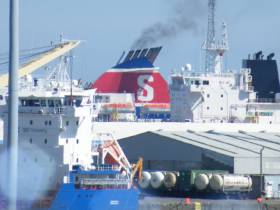Displaying items by tag: Port Industrial Clusters
ESPO Report: 66% of EU Ports Are Hosts to Industrial Clusters
#portsSurvey - According to the European Sea Ports Organisation (ESPO) Fact-Finding Report ‘Trends in EU Ports Governance 2016’ (download PDF) 66% of European ports are hosts to industrial plants.
The main industrial sectors that were present in the sample relate to ship building and repairing, chemical and energy-related industry, construction and steel industry, and food and fishing industry.
These plants benefit from their location in a port for the import of raw material or for the export of finished goods, thanks to the shortening of the transport leg.
Furthermore, synergies and clusters are often created in the ports, which generate even more advantages, like energy availability, circular economy etc.
Ownership of the port land
69% of the industrial companies do not own the land where they are located. In fact, industrial partners may lease the port land from port authorities through lease agreements or mixed contracts or own at least partially the land where they are located.
The contracts between port authorities and industrial companies are usually for a period of time between 20 to 30 years. Shorter and longer contracts also exist, depending on the sector.
Port authorities generate revenue both from the leasing of the land to industry and from the cargo throughput linked to it. European and global markets and macroeconomic trends will have a clear impact on whether certain industries will continue to be present in ports.
This remains outside the control of port authorities who still need to set the long-term planning and strategy of the port with the uncertain long-term situation of their important tenants and source of port traffic.
Background: Trends in EU Ports Governance
The information above was retrieved from the results of the sixth edition of the ESPO Fact-Finding Report ‘Trends in EU Ports Governance 2016’ that was published in June 2016. The aim of the report is to monitor port governance and organisation in Europe and its evolution over time. It is based on a web-based survey that was sent directly to individual port authorities. 86 port authorities from 19 EU Member States, Norway and Iceland completed the questionnaire. Together, they represent more than 200 ports and more than 57% of the overall volume of cargo handled in the European Union.
The PORTOPIA platform will bring an important value added for ports in terms of governance models. In fact, some of the fields of the ESPO Fact-Finding Report are going to be transferred to the PORTOPIA platform, allowing ports to compare geographical ranges, EU averages and evolutions over time in terms of governance model across Europe.





























































